Bloom Clock/Keys/New Hampshire/August/All
The plants pictured below have been recorded as blooming during the month of August in New Hampshire.
Acalypha rhomboidea
 Wikipedia • Commons • Wikibooks (horticulture) • Wikibooks (subject) • Wikispecies • Fruit and seed clock |
Profile for Acalypha rhomboidea (Common Three-seeded mercury)
Recent Logs[edit | edit source] | ||||||||||
Global data:
Temperate zone season(s): Mid Summer, Late Summer, Early Fall
Achillea millefolium
 Wikipedia • Commons • Wikibooks (horticulture) • Wikibooks (subject) • Wikispecies • Fruit and seed clock |
Profile for Achillea millefolium (Common Yarrow)
Recent Logs[edit | edit source]
TristanDolciano *˜˜˜12:00, 22 July 2019 (UTC) | ||||||||||
Global data:
Temperate zone season(s): Late Spring, Early Summer, Mid Summer, Late Summer, Early Fall, Mid Fall, Late Fall
Ambrosia artemisiifolia
 Wikipedia • Commons • Wikibooks (horticulture) • Wikibooks (subject) • Wikispecies • Fruit and seed clock |
Profile for Ambrosia artemisiifolia (Common Ragweed)
Recent Logs[edit | edit source] | ||||||||
Global data:
Temperate zone season(s): Mid Summer, Late Summer bcpgt/9
| Higher taxa = | Cookbook link = | General information = | version tracking for top template (for robotic use) = 8.4.25 }}
Amorpha fruticosa
 Wikipedia • Commons • Wikibooks (horticulture) • Wikibooks (subject) • Wikispecies • Fruit and seed clock |
Profile for Amorpha fruticosa (False Indigo, Indigobush)
Recent Logs[edit | edit source]
| ||||||||||
Global data:
Temperate zone season(s): Early Summer, Mid Summer, Late Summer
Amphicarpaea bracteata
 Wikipedia • Commons • Wikibooks (horticulture) • Wikibooks (subject) • Wikispecies • Fruit and seed clock |
Profile for Amphicarpaea bracteata (Hog-peanut)
Recent Logs[edit | edit source]
| ||||||||||||||||||||
Global data:
Temperate zone season(s): Late Summer, Early Fall
Apios americana
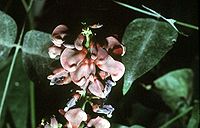 Wikipedia • Commons • Wikibooks (horticulture) • Wikibooks (subject) • Wikispecies • Fruit and seed clock |
Profile for Apios americana (Groundnut)
Recent Logs[edit | edit source]
| ||||||||||||||||||||
Global data:
Temperate zone season(s): Mid Summer, Late Summer, Early Fall
Aralia hispida
 Wikipedia • Commons • Wikibooks (horticulture) • Wikibooks (subject) • Wikispecies • Fruit and seed clock |
Profile for Aralia hispida (Bristly Spikenard, Bristly Sarsaparilla)
Recent Logs[edit | edit source]
| ||||||||
Global data:
Temperate zone season(s): Early Summer, Mid Summer, Late Summer, Early Fall
Arctium lappa
 Wikipedia • Commons • Wikibooks (horticulture) • Wikibooks (subject) • Wikispecies • Fruit and seed clock |
Profile for Arctium lappa (Burdock)
Recent Logs[edit | edit source] | ||||||||||
Global data:
Temperate zone season(s): Mid Summer, Late Summer, Early Fall
Aster novae-angliae
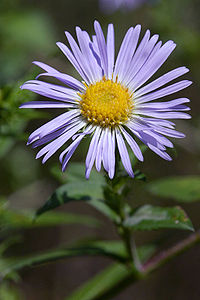 Wikipedia • Commons • Wikibooks (horticulture) • Wikibooks (subject) • Wikispecies • Fruit and seed clock |
Profile for Aster novae-angliae (New England Aster)
Recent Logs[edit | edit source]
| ||||||||||
Global data:
Temperate zone season(s): Early Summer, Mid Summer, Late Summer, Early Fall, Mid Fall, Late Fall
Berteroa incana
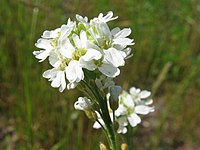 Wikipedia • Commons • Wikibooks (horticulture) • Wikibooks (subject) • Wikispecies • Fruit and seed clock |
Profile for Berteroa incana (Hoary alyssum)
Recent Logs[edit | edit source]
| ||||||
Global data:
Temperate zone season(s): Mid Summer, Late Summer, Early Fall, Mid Fall, Late Fall
Calystegia sepium
 Wikipedia • Commons • Wikibooks (horticulture) • Wikibooks (subject) • Wikispecies • Fruit and seed clock |
Profile for Calystegia sepium (Hedge Bindweed)
Recent Logs[edit | edit source]
| ||||||||||
Global data:
Temperate zone season(s): Mid Summer, Late Summer, Early Fall
Campanula rapunculoides
 Wikipedia • Commons • Wikibooks (horticulture) • Wikibooks (subject) • Wikispecies • Fruit and seed clock |
Profile for Campanula rapunculoides (Bellflower)
Recent Logs[edit | edit source]
| ||
Global data:
Temperate zone season(s): Mid Summer, Late Summer
Chelidonium majus
 Wikipedia • Commons • Wikibooks (horticulture) • Wikibooks (subject) • Wikispecies • Fruit and seed clock |
Profile for Chelidonium majus (Greater Celandine)
Recent Logs[edit | edit source]
| ||||||||
Global data:
Temperate zone season(s): Mid Spring, Late Spring, Early Summer, Mid Summer, Late Summer, Early Fall
Chelone glabra
 Wikipedia • Commons • Wikibooks (horticulture) • Wikibooks (subject) • Wikispecies • Fruit and seed clock |
Profile for Chelone glabra (White Turtlehead)
Recent Logs[edit | edit source] | ||||||||||||
Global data:
Temperate zone season(s): Late Summer, Early Fall
Chenopodium album
 Wikipedia • Commons • Wikibooks (horticulture) • Wikibooks (subject) • Wikispecies • Fruit and seed clock |
Profile for Chenopodium album (Lambsquarters, Goosefoot)
Recent Logs[edit | edit source]
| ||||||||
Global data:
Temperate zone season(s): Mid Summer, Late Summer, Early Fall, Mid Fall, Late Fall
Cicuta maculata
 Wikipedia • Commons • Wikibooks (horticulture) • Wikibooks (subject) • Wikispecies • Fruit and seed clock |
Profile for Cicuta maculata (Spotted Water Hemlock)
Recent Logs[edit | edit source]
| ||||||||||||||||||||
Global data:
Temperate zone season(s): Mid Summer, Late Summer
Cirsium vulgare
 Wikipedia • Commons • Wikibooks (horticulture) • Wikibooks (subject) • Wikispecies • Fruit and seed clock |
Profile for Cirsium vulgare (Bull Thistle)
Recent Logs[edit | edit source]
| ||||||||
Global data:
Conyza canadensis
 Wikipedia • Commons • Wikibooks (horticulture) • Wikibooks (subject) • Wikispecies • Fruit and seed clock |
Profile for Conyza canadensis (Horseweed)
Recent Logs[edit | edit source]
| ||||||||||||||
Global data:
Temperate zone season(s): Mid Summer, Late Summer, Early Fall
Cornus ssericea
 Wikipedia • Commons • Wikibooks (horticulture) • Wikibooks (subject) • Wikispecies • Fruit and seed clock |
Profile for Cornus sericea (Red Osier Dogwood)
Recent Logs[edit | edit source]
| ||||||||||||||||
Global data:
Temperate zone season(s): Late Summer
Dalibarda repens
 Wikipedia • Commons • Wikibooks (horticulture) • Wikibooks (subject) • Wikispecies • Fruit and seed clock |
Profile for Dalibarda repens (Dewdrop, Robin Runaway)
Recent Logs[edit | edit source]
| ||||||||||||
Global data:
Temperate zone season(s): Early Summer, Mid Summer, Late Summer
Daucus carota
 Wikipedia • Commons • Wikibooks (horticulture) • Wikibooks (subject) • Wikispecies • Fruit and seed clock |
Profile for Daucus carota (Carrot, Queen Anne's Lace)
Recent Logs[edit | edit source]
| ||||||||||
Global data:
Temperate zone season(s): Early Summer, Mid Summer, Late Summer, Early Fall, Mid Fall
Dianthus armeria
 Wikipedia • Commons • Wikibooks (horticulture) • Wikibooks (subject) • Wikispecies • Fruit and seed clock |
Profile for Dianthus armeria (Deptford Pink)
Recent Logs[edit | edit source]
| ||
Global data:
Temperate zone season(s): Early Summer, Mid Summer, Late Summer, Early Fall, Mid Fall
Erigeron annuus
 Wikipedia • Commons • Wikibooks (horticulture) • Wikibooks (subject) • Wikispecies • Fruit and seed clock |
Profile for Erigeron annuus (Fleabane)
Recent Logs[edit | edit source]
| ||||||||
Global data:
Temperate zone season(s): Late Spring, Early Summer, Mid Summer, Late Summer
Eriocaulon aquaticum
 Wikipedia • Commons • Wikibooks (horticulture) • Wikibooks (subject) • Wikispecies • Fruit and seed clock |
Profile for Eriocaulon aquaticum (Pipewort)
Recent Logs[edit | edit source]
| ||||||||||||||
Global data:
Temperate zone season(s): Mid Summer, Late Summer
Eupatorium perfoliatum
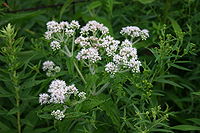 Wikipedia • Commons • Wikibooks (horticulture) • Wikibooks (subject) • Wikispecies • Fruit and seed clock |
Profile for Eupatorium perfoliatum (Boneset)
Recent Logs[edit | edit source]
| ||||||||
Global data:
Eupatorium purpureum
 Wikipedia • Commons • Wikibooks (horticulture) • Wikibooks (subject) • Wikispecies • Fruit and seed clock |
Profile for Eupatorium purpureum (Joe Pye weed)
Recent Logs[edit | edit source]
| ||||||||
Global data:
Fallopia japonica
 Wikipedia • Commons • Wikibooks (horticulture) • Wikibooks (subject) • Wikispecies • Fruit and seed clock |
Profile for Fallopia japonica (Japanese Knotweed)
Recent Logs[edit | edit source] | ||||||||||
Global data:
Temperate zone season(s): Late Summer, Early Fall
Galium triflorum
 Wikipedia • Commons • Wikibooks (horticulture) • Wikibooks (subject) • Wikispecies • Fruit and seed clock |
Profile for Galium triflorum (Fragrant Bedstraw)
Recent Logs[edit | edit source]
| ||||||||||||
Global data:
Temperate zone season(s): Early Summer, Mid Summer, Late Summer, Early Fall, Mid Fall, Late Fall
Gaultheria procumbens
 Wikipedia • Commons • Wikibooks (horticulture) • Wikibooks (subject) • Wikispecies • Fruit and seed clock |
Profile for Gaultheria procumbens (Eastern Teaberry, Checkerberry, Boxberry and American Wintergreen)
Recent Logs[edit | edit source]
| ||||||||||||||||||
Global data:
Temperate zone season(s): Mid Summer, Late Summer
Helianthus divaricatus
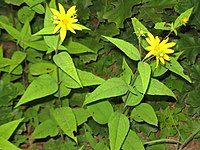 Wikipedia • Commons • Wikibooks (horticulture) • Wikibooks (subject) • Wikispecies • Fruit and seed clock |
Profile for Helianthus divaricatus (Woodland Sunflower)
Recent Logs[edit | edit source]
| ||||||||||||||||
Global data:
Temperate zone season(s): Mid Summer, Late Summer, Early Fall, Mid Fall
Hemerocallis
 Wikipedia • Commons • Wikibooks (horticulture) • Wikibooks (subject) • Wikispecies • Fruit and seed clock |
Profile for Hemerocallis (Daylily)
Recent Logs[edit | edit source]
| ||||||||||
Global data:
Temperate zone season(s): Early Summer, Mid Summer, Late Summer, Early Fall
Hieracium pratense
 Wikipedia • Commons • Wikibooks (horticulture) • Wikibooks (subject) • Wikispecies • Fruit and seed clock |
Profile for Hieracium pratense (Yellow Hawkweed, King Devil)
Recent Logs[edit | edit source]
| ||||||||||||||||
Global data:
Temperate zone season(s): Late Spring, Early Summer, Mid Summer, Late Summer
Hosta
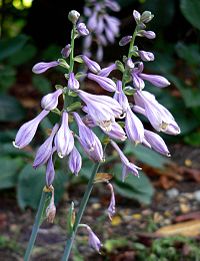 Wikipedia • Commons • Wikibooks (horticulture) • Wikibooks (subject) • Wikispecies • Fruit and seed clock |
Profile for Hosta (Hosta)
Recent Logs[edit | edit source]
| ||||||||||
Global data:
Temperate zone season(s): Early Summer, Late Summer, Late Summer, Early Fall
Hydrangea macrophylla
 Wikipedia • Commons • Wikibooks (horticulture) • Wikibooks (subject) • Wikispecies • Fruit and seed clock |
Profile for Hydrangea macrophylla (Bigleaf Hydrangea)
Recent Logs[edit | edit source]
| ||||||
Global data:
Temperate zone season(s): Early Summer, Mid Summer, Late Summer, Early Fall, Mid Fall
Hypericum mutilum
 Wikipedia • Commons • Wikibooks (horticulture) • Wikibooks (subject) • Wikispecies • Fruit and seed clock |
Profile for Hypericum mutilum (Dwarf St. John's Wort)
Recent Logs[edit | edit source]
| ||||||||||||
Global data:
Temperate zone season(s): Mid Summer, Late Summer, Early Fall
Hypericum perforatum
 Wikipedia • Commons • Wikibooks (horticulture) • Wikibooks (subject) • Wikispecies • Fruit and seed clock |
Profile for Hypericum perforatum (St. John's wort)
Recent Logs[edit | edit source]
| ||||||||||||||
Global data:
Temperate zone season(s): Early Summer, Mid Summer, Late Summer, Early Fall, Mid Fall
Impatiens capensis
 Wikipedia • Commons • Wikibooks (horticulture) • Wikibooks (subject) • Wikispecies • Fruit and seed clock |
Profile for Impatiens capensis (Jewelweed)
Recent Logs[edit | edit source]
| ||||||||||
Global data:
Temperate zone season(s): Early Summer, Mid Summer, Late Summer, Early Fall
Leontodon autumnalis
 Wikipedia • Commons • Wikibooks (horticulture) • Wikibooks (subject) • Wikispecies • Fruit and seed clock |
Profile for Leontodon autumnalis (Fall Dendelion)
Recent Logs[edit | edit source]
| ||||||||||
Global data:
Temperate zone season(s): Late Summer, Early Fall, Mid Fall
Lepidium virginicum
 Wikipedia • Commons • Wikibooks (horticulture) • Wikibooks (subject) • Wikispecies • Fruit and seed clock |
Profile for Lepidium virginicum (Virginia pepperweed)
Recent Logs[edit | edit source] | ||||||||||||||||
Global data:
Temperate zone season(s): Early Summer, Mid Summer, Late Summer, Early Fall, Mid Fall, Late Fall
Lespedeza capitata
 Wikipedia • Commons • Wikibooks (horticulture) • Wikibooks (subject) • Wikispecies • Fruit and seed clock |
Profile for Lespedeza capitata (Roundhead Lespedeza)
Recent Logs[edit | edit source]
| ||||||||||||
Global data:
Temperate zone season(s): Mid Summer, Late Summer
Leucanthemum vulgare
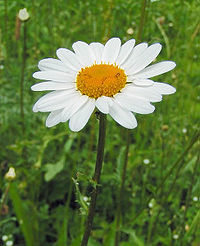 Wikipedia • Commons • Wikibooks (horticulture) • Wikibooks (subject) • Wikispecies • Fruit and seed clock |
Profile for Leucanthemum vulgare (Oxeye Daisy)
Recent Logs[edit | edit source]
| ||||||||
Global data:
Temperate zone season(s): Late Spring, Early Summer, Mid Summer
Linaria vulgaris
 Wikipedia • Commons • Wikibooks (horticulture) • Wikibooks (subject) • Wikispecies • Fruit and seed clock |
Profile for Linaria vulgaris (Butter and Eggs)
Recent Logs[edit | edit source]
| ||||||||||||||||
Global data:
Temperate zone season(s): Late Spring, Early Summer, Mid Summer, Late Summer, Mid Fall, Late Fall
Lobelia cardinalis
 Wikipedia • Commons • Wikibooks (horticulture) • Wikibooks (subject) • Wikispecies • Fruit and seed clock |
Profile for Lobelia cardinalis (Cardinal Flower)
Recent Logs[edit | edit source] | ||
Global data:
Lobelia dortmanna
 Wikipedia • Commons • Wikibooks (horticulture) • Wikibooks (subject) • Wikispecies • Fruit and seed clock |
Profile for Lobelia dortmanna (Water Lobelia)
Recent Logs[edit | edit source]
| ||||||||||||||||
Global data:
Temperate zone season(s): Mid Summer, Late Summer
Lobelia siphilitica
 Wikipedia • Commons • Wikibooks (horticulture) • Wikibooks (subject) • Wikispecies • Fruit and seed clock |
Profile for Lobelia siphilitica (Blue Lobelia)
Recent Logs[edit | edit source] | ||
Global data:
Temperate zone season(s): Mid Summer, Late Summer, Early Fall, Mid Fall, Late Fall
Lotus corniculatus
 Wikipedia • Commons • Wikibooks (horticulture) • Wikibooks (subject) • Wikispecies • Fruit and seed clock |
Profile for Lotus corniculatus (Birdsfoot Trefoil)
Recent Logs[edit | edit source]
| ||||||||||||||
Global data:
Temperate zone season(s): Late Spring, Early Summer, Mid Summer, Late Summer, Early Fall, Mid Fall
Lysimachia ciliata
 Wikipedia • Commons • Wikibooks (horticulture) • Wikibooks (subject) • Wikispecies • Fruit and seed clock |
Profile for Lysimachia ciliata (Fringed Loosestrife)
Recent Logs[edit | edit source]
| ||
Global data:
Temperate zone season(s): Early Summer, Mid Summer, Late Summer
Lysimachia quadrifolia
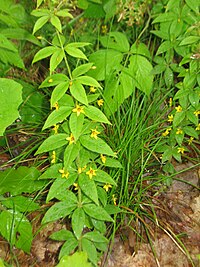 Wikipedia • Commons • Wikibooks (horticulture) • Wikibooks (subject) • Wikispecies • Fruit and seed clock |
Profile for Lysimachia quadrifolia (Whorled Loosestrife)
Recent Logs[edit | edit source]
| ||||||||||||||
Global data:
Temperate zone season(s): Early Summer, Mid Summer, Late Summer
Lysimachia terrestris
 Wikipedia • Commons • Wikibooks (horticulture) • Wikibooks (subject) • Wikispecies • Fruit and seed clock |
Profile for Lysimachia terrestris (Swamp Candles)
Recent Logs[edit | edit source]
| ||||||||||||||||
Global data:
Temperate zone season(s): Mid Summer, Late Summer
Lythrum salicaria
 Wikipedia • Commons • Wikibooks (horticulture) • Wikibooks (subject) • Wikispecies • Fruit and seed clock |
Profile for Lythrum salicaria (Purple Loosestrife)
Recent Logs[edit | edit source] | ||||||||
Global data:
Temperate zone season(s): Early Summer, Mid Summer, Late Summer, Early Fall
Melampyrum lineare
 Wikipedia • Commons • Wikibooks (horticulture) • Wikibooks (subject) • Wikispecies • Fruit and seed clock |
Profile for Melampyrum lineare (Cow-wheat)
Recent Logs[edit | edit source]
| ||||||||||||
Global data:
Temperate zone season(s): Early Summer, Mid Summer, Late Summer
Melilotus alba
 Wikipedia • Commons • Wikibooks (horticulture) • Wikibooks (subject) • Wikispecies • Fruit and seed clock |
Profile for Melilotus alba (White Sweet Clover)
Recent Logs[edit | edit source]
| ||||||||||||
Global data:
Temperate zone season(s): Early Summer, Mid Summer, Late Summer, Early Fall, Mid Fall
Mentha arvensis
 Wikipedia • Commons • Wikibooks (horticulture) • Wikibooks (subject) • Wikispecies • Fruit and seed clock |
Profile for Mentha arvensis (Field Mint, Wild Mint)
Recent Logs[edit | edit source]
| ||||||||||||||||
Global data:
Temperate zone season(s): Mid Summer, Late Summer
Mimulus ringens
 Wikipedia • Commons • Wikibooks (horticulture) • Wikibooks (subject) • Wikispecies • Fruit and seed clock |
Profile for Mimulus ringens (Monkey flower)
Recent Logs[edit | edit source]
| ||
Global data:
Temperate zone season(s): Mid Summer, Late Summer
Mollugo verticillata
 Wikipedia • Commons • Wikibooks (horticulture) • Wikibooks (subject) • Wikispecies • Fruit and seed clock |
Profile for Mollugo verticillata (Carpetweed)
Recent Logs[edit | edit source]
| ||||||||||||
Global data:
Temperate zone season(s): Early Summer, Mid Summer, Late Summer, Early Fall, Mid Fall
Monarda didyma
 Wikipedia • Commons • Wikibooks (horticulture) • Wikibooks (subject) • Wikispecies • Fruit and seed clock |
Profile for Monarda didyma (Bee Balm)
Recent Logs[edit | edit source] | ||||||||
Global data:
Monotropa uniflora
 Wikipedia • Commons • Wikibooks (horticulture) • Wikibooks (subject) • Wikispecies • Fruit and seed clock |
Profile for Monotropa uniflora (Indian Pipe)
Recent Logs[edit | edit source]
| ||||||||||||||||||
Global data:
Temperate zone season(s): Early Summer, Mid Summer, Late Summer, Early Fall
Nuphar variegata
 Wikipedia • Commons • Wikibooks (horticulture) • Wikibooks (subject) • Wikispecies • Fruit and seed clock |
Profile for Nuphar variegata (Bullhead Lily, Yellow Pond Lily)
Recent Logs[edit | edit source]
| ||||||||
Global data:
Temperate zone season(s): Late Spring, Early Summer, Mid Summer, Late Summer
Nuttallanthus canadensis
 Wikipedia • Commons • Wikibooks (horticulture) • Wikibooks (subject) • Wikispecies • Fruit and seed clock |
Profile for Nuttallanthus canadensis (Blue Toadflax)
Recent Logs[edit | edit source]
| ||||||||||||
Global data:
Temperate zone season(s): Mid Summer, Late Summer
Nymphaea odorata
 Wikipedia • Commons • Wikibooks (horticulture) • Wikibooks (subject) • Wikispecies • Fruit and seed clock |
Profile for Nymphaea odorata (White Water Lily)
Recent Logs[edit | edit source]
| ||||||||||||||||
Global data:
Temperate zone season(s): Early Summer, Mid Summer, Late Summer
Nymphoides cordata
 Wikipedia • Commons • Wikibooks (horticulture) • Wikibooks (subject) • Wikispecies • Fruit and seed clock |
Profile for Nymphoides cordata (Floating Heart)
Recent Logs[edit | edit source]
| ||||||||||||||
Global data:
Temperate zone season(s): Mid Summer, Late Summer
Oenothera
 Wikipedia • Commons • Wikibooks (horticulture) • Wikibooks (subject) • Wikispecies • Fruit and seed clock |
Profile for Oenothera (Evening Primrose)
Recent Logs[edit | edit source]
| ||||||
Global data:
Temperate zone season(s): Mid Summer, Late Summer, Early Fall, Mid Fall, Late Fall
Oxalis corniculata
 Wikipedia • Commons • Wikibooks (horticulture) • Wikibooks (subject) • Wikispecies • Fruit and seed clock |
Profile for Oxalis corniculata (Creeping Woodsorrel)
Recent Logs[edit | edit source] | ||||||||||
Global data:
Temperate zone season(s): Mid Spring, Late Spring, Early Summer, Mid Summer, Late Summer, Early Fall, Mid Fall
Oxalis stricta
 Wikipedia • Commons • Wikibooks (horticulture) • Wikibooks (subject) • Wikispecies • Fruit and seed clock |
Profile for Oxalis stricta (Common Yellow Woodsorrel)
Recent Logs[edit | edit source]
| ||||||||||||||
Global data:
Temperate zone season(s): Mid Spring, Late Spring, Early Summer, Mid Summer, Late Summer, Early Fall, Mid Fall, Late Fall
Phytolacca americana
 Wikipedia • Commons • Wikibooks (horticulture) • Wikibooks (subject) • Wikispecies • Fruit and seed clock |
Profile for Phytolacca americana (Pokeweed)
Recent Logs[edit | edit source]
| ||||||
Global data:
Temperate zone season(s): Early Summer, Mid Summer, Late Summer, Early Fall, Mid Fall
Plantago lanceolata
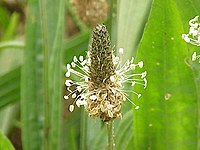 Wikipedia • Commons • Wikibooks (horticulture) • Wikibooks (subject) • Wikispecies • Fruit and seed clock |
Profile for Plantago lanceolata (Ribwort Plantain)
Recent Logs[edit | edit source]--Anna reg 20:54, 29 April 2010 (UTC)
| ||||||||||||
Global data:
Temperate zone season(s): Late Spring, Early Summer, Mid Summer, Late Summer, Early Fall, Mid Fall
Polygonum pensylvanicum
 Wikipedia • Commons • Wikibooks (horticulture) • Wikibooks (subject) • Wikispecies • Fruit and seed clock |
Profile for Polygonum pensylvanicum (Pennsylvania Smartweed)
Recent Logs[edit | edit source]
| ||||||||||||||
Global data:
Polygonum sagittatum
 Wikipedia • Commons • Wikibooks (horticulture) • Wikibooks (subject) • Wikispecies • Fruit and seed clock |
Profile for Polygonum sagittatum (Arrowleaf tearthumb)
Recent Logs[edit | edit source] | ||
Global data:
Pontederia cordata
 Wikipedia • Commons • Wikibooks (horticulture) • Wikibooks (subject) • Wikispecies • Fruit and seed clock |
Profile for Pontederia cordata (Pickerelweed)
Recent Logs[edit | edit source]
| ||||||||||||||||
Global data:
Potentilla arguta
 Wikipedia • Commons • Wikibooks (horticulture) • Wikibooks (subject) • Wikispecies • Fruit and seed clock |
Profile for Potentilla arguta (Tall Cinquefoil)
Recent Logs[edit | edit source]
| ||||||||||||
Global data:
Temperate zone season(s): Early Summer, Mid Summer, Late Summer, Early Fall
Potentilla norvegica
 Wikipedia • Commons • Wikibooks (horticulture) • Wikibooks (subject) • Wikispecies • Fruit and seed clock |
Profile for Potentilla norvegica (Norwegian Cinquefoil)
Recent Logs[edit | edit source]
| ||||||||||||
Global data:
Temperate zone season(s): Late Summer, Early Fall, Mid Fall
Prenanthes
 Wikipedia • Commons • Wikibooks (horticulture) • Wikibooks (subject) • Wikispecies • Fruit and seed clock |
Profile for Prenanthes (Rattlesnake Roots)
Recent Logs[edit | edit source]
| ||
Global data:
Temperate zone season(s): Mid Summer, Late Summer, Early Fall
Prunella vulgaris
 Wikipedia • Commons • Wikibooks (horticulture) • Wikibooks (subject) • Wikispecies • Fruit and seed clock |
Profile for Prunella vulgaris (Self-heal, Heal-all)
Recent Logs[edit | edit source]
| ||||||||||
Global data:
Temperate zone season(s): Early Summer, Mid Summer, Mid Fall
Pseudognaphalium obtusifolium
 Wikipedia • Commons • Wikibooks (horticulture) • Wikibooks (subject) • Wikispecies • Fruit and seed clock |
Profile for Pseudognaphalium obtusifolium (Sweet Everlasting, Rabbit Tobacco)
Recent Logs[edit | edit source]
| ||||||||||||
Global data:
Temperate zone season(s): Late Summer, Early Fall, Mid Fall, Late Fall
Rosa
 Wikipedia • Commons • Wikibooks (horticulture) • Wikibooks (subject) • Wikispecies • Fruit and seed clock |
Profile for Rosa (Rose)
Recent Logs[edit | edit source]
| ||||||||||||||
Global data:
Temperate zone season(s): Late Spring, Early Summer, Mid Summer, Late Summer, Early Fall Mid Fall, Late Fall
Rumex crispus
 Wikipedia • Commons • Wikibooks (horticulture) • Wikibooks (subject) • Wikispecies • Fruit and seed clock |
Profile for Rumex crispus (Curly Dock)
Recent Logs[edit | edit source]
| ||
Global data:
Temperate zone season(s): Early Summer, Mid Summer, Late Summer, Early Fall
Sagittaria graminea
 Wikipedia • Commons • Wikibooks (horticulture) • Wikibooks (subject) • Wikispecies • Fruit and seed clock |
Profile for Sagittaria graminea (Grassy Arrowhead)
Recent Logs[edit | edit source]
| ||||||||||||||
Global data:
Sagittaria latifolia
 Wikipedia • Commons • Wikibooks (horticulture) • Wikibooks (subject) • Wikispecies • Fruit and seed clock |
Profile for Sagittaria latifolia (Broadleaf Arrowhead, duck potato, Indian potato, wapato)
Recent Logs[edit | edit source]
| ||
Global data:
Saponaria officinalis
 Wikipedia • Commons • Wikibooks (horticulture) • Wikibooks (subject) • Wikispecies • Fruit and seed clock |
Profile for Saponaria officinalis (Soapwort)
Recent Logs[edit | edit source]
| ||||||||
Global data:
Temperate zone season(s): Late Spring, Early Summer, Mid Summer, Late Summer, Early Fall, Mid Fall
Schoenoplectus tabernaemontani
 Wikipedia • Commons • Wikibooks (horticulture) • Wikibooks (subject) • Wikispecies • Fruit and seed clock |
Profile for Schoenoplectus tabernaemontani (Softstem Bulrush)
Recent Logs[edit | edit source]
| ||||||||||||||||
Global data:
Temperate zone season(s): Mid Summer, Late Summer
Securigera varia
 Wikipedia • Commons • Wikibooks (horticulture) • Wikibooks (subject) • Wikispecies • Fruit and seed clock |
Profile for Securigera varia (Crown Vetch)
Recent Logs[edit | edit source]
| ||||||||||||
Global data:
Temperate zone season(s): Early Summer, Mid Summer, Late Summer, Early Fall, Mid Fall, Late Fall
Silene dioica × S. latifolia
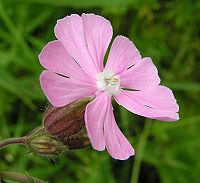 Wikipedia • Commons • Wikibooks (horticulture) • Wikibooks (subject) • Wikispecies • Fruit and seed clock |
Profile for Silene dioica × S. latifolia (Hybrid Campion)
Recent Logs[edit | edit source]
| ||||||
Global data:
Silene latifolia
 Wikipedia • Commons • Wikibooks (horticulture) • Wikibooks (subject) • Wikispecies • Fruit and seed clock |
Profile for Silene latifolia (White Campion)
Recent Logs[edit | edit source]
| ||
Global data:
Temperate zone season(s): Late Spring, Early Summer, Mid Summer
Silene vulgaris
 Wikipedia • Commons • Wikibooks (horticulture) • Wikibooks (subject) • Wikispecies • Fruit and seed clock |
Profile for Silene vulgaris (Bladder Campion)
Recent Logs[edit | edit source]
| ||
Global data:
Solanum americanum
 Wikipedia • Commons • Wikibooks (horticulture) • Wikibooks (subject) • Wikispecies • Fruit and seed clock |
Profile for Solanum americanum (American Nightshade)
Recent Logs[edit | edit source]
| ||
Global data:
Temperate zone season(s): Mid Summer, Late Summer
Solanum dulcamara
 Wikipedia • Commons • Wikibooks (horticulture) • Wikibooks (subject) • Wikispecies • Fruit and seed clock |
Profile for Solanum dulcamara (Bittersweet, Bitter Nightshade, Blue Bindweed, Climbing Nightshade)
Recent Logs[edit | edit source]
| ||||||||||||
Global data:
Temperate zone season(s): Early Summer, Mid Summer, Late Summer, Early Fall, Mid Fall
Solidago
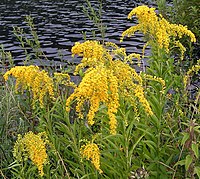 Wikipedia • Commons • Wikibooks (horticulture) • Wikibooks (subject) • Wikispecies • Fruit and seed clock |
Profile for Solidago (Goldenrod)
Recent Logs[edit | edit source]
| ||||
Global data:
Temperate zone season(s): Late Summer, Early Fall, Mid Fall, Late Fall, Early Winter
Solidago canadensis
 Wikipedia • Commons • Wikibooks (horticulture) • Wikibooks (subject) • Wikispecies • Fruit and seed clock |
Profile for Solidago canadensis (Canada Goldenrod)
Recent Logs[edit | edit source]
| ||||||||||||
Global data:
Spergularia
 Wikipedia • Commons • Wikibooks (horticulture) • Wikibooks (subject) • Wikispecies • Fruit and seed clock |
Profile for Spergularia (Sandspurry)
Recent Logs[edit | edit source]
| ||||||||||||||
Global data:
Temperate zone season(s): Late Spring, Early Summer, Mid Summer, Late Summer, Early Fall
Spiraea alba
 Wikipedia • Commons • Wikibooks (horticulture) • Wikibooks (subject) • Wikispecies • Fruit and seed clock |
Profile for Spiraea alba (Meadowsweet)
Recent Logs[edit | edit source]
| ||
Global data:
Spiraea japonica
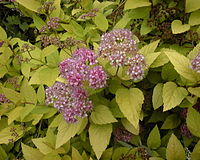 Wikipedia • Commons • Wikibooks (horticulture) • Wikibooks (subject) • Wikispecies • Fruit and seed clock |
Profile for Spiraea japonica (Japanese Spiraea)
Recent Logs[edit | edit source]
| ||||||||
Global data:
Temperate zone season(s): Early Summer, Mid Summer, Late Summer, Early Fall, Mid Fall
Taraxacum officinale
 Wikipedia • Commons • Wikibooks (horticulture) • Wikibooks (subject) • Wikispecies • Fruit and seed clock |
Profile for Taraxacum officinale (Common Dandelion)
Recent Logs[edit | edit source]
| ||||||||||||||||||
Global data:
Temperate zone season(s): Mid Winter, Late Winter, Early Spring, Mid Spring, Late Spring, Early Summer, Mid Summer, Late Summer, Early Fall, Mid Fall, Late Fall, Early Winter
Triadenum virginicum
 Wikipedia • Commons • Wikibooks (horticulture) • Wikibooks (subject) • Wikispecies • Fruit and seed clock |
Profile for Triadenum virginicum (Virginia marsh St. Johnswort)
Recent Logs[edit | edit source]
| ||||||||||||||
Global data:
Trichostema dichotomum
 Wikipedia • Commons • Wikibooks (horticulture) • Wikibooks (subject) • Wikispecies • Fruit and seed clock |
Profile for Trichostema dichotomum (Forked Bluecurls)
Recent Logs[edit | edit source]
| ||||||||||||||
Global data:
Temperate zone season(s): Late Summer, Early Fall, Mid Fall
Trifolium arvense
 Wikipedia • Commons • Wikibooks (horticulture) • Wikibooks (subject) • Wikispecies • Fruit and seed clock |
Profile for Trifolium arvense (Rabbit's-foot Clover)
Recent Logs[edit | edit source]
| ||||||||
Global data:
Temperate zone season(s): Early Summer, Mid Summer, Mid Fall
Trifolium aureum
 Wikipedia • Commons • Wikibooks (horticulture) • Wikibooks (subject) • Wikispecies • Fruit and seed clock |
Profile for Trifolium aureum (Hop Clover)
Recent Logs[edit | edit source]
| ||||||||||||||
Global data:
Trifolium pratense
 Wikipedia • Commons • Wikibooks (horticulture) • Wikibooks (subject) • Wikispecies • Fruit and seed clock |
Profile for Trifolium pratense (Red Clover)
Recent Logs[edit | edit source]
| ||||||||||
Global data:
Temperate zone season(s): Late Spring, Early Summer, Mid Summer, Late Summer, Early Fall, Mid Fall, Late Fall
Trifolium repens
 Wikipedia • Commons • Wikibooks (horticulture) • Wikibooks (subject) • Wikispecies • Fruit and seed clock |
Profile for Trifolium repens (White Clover)
Recent Logs[edit | edit source]
| ||||||||||
Global data:
Temperate zone season(s): Late Spring, Early Summer, Mid Summer, Late Summer, Early Fall, Mid Fall
Verbascum thapsus
 Wikipedia • Commons • Wikibooks (horticulture) • Wikibooks (subject) • Wikispecies • Fruit and seed clock |
Profile for Verbascum thapsus (Mullein)
Recent Logs[edit | edit source]
| ||||||||||
Global data:
Temperate zone season(s): Early Summer, Mid Summer, Late Summer, Early Fall
Verbena urticifolia
 Wikipedia • Commons • Wikibooks (horticulture) • Wikibooks (subject) • Wikispecies • Fruit and seed clock |
Profile for Verbena urticifolia (White Vervain)
Recent Logs[edit | edit source] | ||
Global data:
Temperate zone season(s): Mid Summer, Late Summer
Vicia cracca
 Wikipedia • Commons • Wikibooks (horticulture) • Wikibooks (subject) • Wikispecies • Fruit and seed clock |
Profile for Vicia cracca (Tufted Vetch)
Recent Logs[edit | edit source]
| ||
Global data:
Temperate zone season(s): Late Spring, Early Summer, Mid Summer, Late Summer, Early Fall, Mid Fall, Late Fall
Viola tricolor
 Wikipedia • Commons • Wikibooks (horticulture) • Wikibooks (subject) • Wikispecies • Fruit and seed clock |
Profile for Viola tricolor (Heartsease, Johnny-jump-up)
Recent Logs[edit | edit source]
| ||
Global data:
Temperate zone season(s): Early Summer, Mid Summer, Late Summer, Early Fall, Mid Fall
